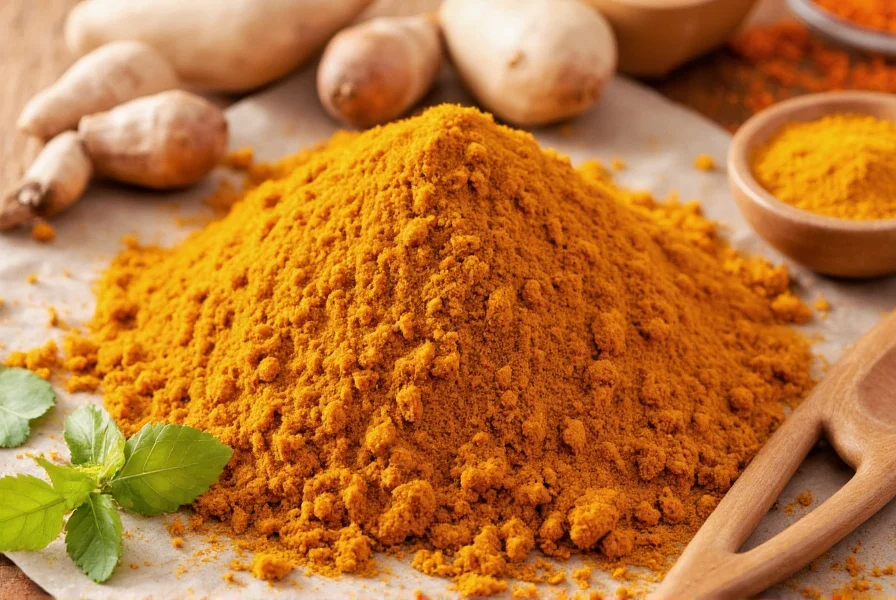For centuries, turmeric has been a cornerstone of traditional medicine systems across Asia. This vibrant yellow spice, derived from the Curcuma longa plant's rhizome, contains several bioactive compounds collectively called curcuminoids. Among these, curcumin (diferuloylmethane) represents approximately 77% of curcuminoids and delivers most documented health benefits. Understanding the distinction between whole turmeric and its concentrated curcumin components is essential for making informed decisions about their use.
The Science of Turmeric and Curcumin
While often used interchangeably, turmeric and curcumin are not the same. Turmeric is the whole spice containing starches, fibers, and multiple curcuminoids. Curcumin specifically refers to the most potent polyphenol within turmeric. The typical turmeric root contains only 2-8% curcumin by weight, which explains why most clinical studies investigating therapeutic effects use standardized curcumin extracts providing significantly higher concentrations than culinary turmeric could deliver.
One of curcumin's greatest challenges is its poor bioavailability. When consumed alone, curcumin has limited absorption, rapid metabolism, and quick systemic elimination. This explains why many traditional preparations combine turmeric with black pepper (containing piperine) or fats—methods now validated by modern science. Research shows piperine can increase curcumin absorption by up to 2,000%, while consuming curcumin with healthy fats enhances its solubility.
Evidence-Based Health Benefits
Over 3,000 scientific studies have investigated curcumin's potential health effects. The strongest evidence supports its role in modulating inflammation pathways. Curcumin inhibits multiple molecules involved in inflammation, including NF-kB, cytokines, and enzymes like COX-2. This mechanism explains its potential benefits for:
- Joint health: Multiple randomized controlled trials show curcumin supplementation (typically 500 mg twice daily of a bioavailable form) significantly reduces pain and improves function in osteoarthritis and rheumatoid arthritis, with effects comparable to some NSAIDs but with better safety profiles
- Oxidative stress reduction: Curcumin boosts the body's antioxidant enzymes while directly neutralizing free radicals, potentially protecting against cellular damage
- Brain health: Research suggests curcumin may increase brain-derived neurotrophic factor (BDNF), potentially supporting cognitive function and mood regulation
| Health Area | Research Support Level | Typical Effective Dosage |
|---|---|---|
| Inflammation Reduction | Strong (Multiple RCTs) | 500-1,500 mg bioavailable curcumin daily |
| Joint Comfort | Strong (Multiple RCTs) | 500 mg twice daily of standardized extract |
| Mood Support | Moderate (Several clinical trials) | 500-1,000 mg daily |
| Cardiovascular Health | Preliminary (Animal and small human studies) | Research ongoing |
Practical Usage Guidelines
For those considering incorporating curcumin into their wellness routine, understanding proper usage is critical. The Arthritis Foundation recommends 500 mg of a standardized curcumin product twice daily for joint concerns. However, not all curcumin supplements deliver equal benefits due to absorption challenges.
Look for formulations specifically designed to enhance bioavailability:
- Piperine-enhanced: Combines curcumin with black pepper extract
- Liposomal: Encapsulates curcumin in fat molecules for better absorption
- Phospholipid-bound: Attaches curcumin to phospholipids (often labeled as Meriva®)
- Nanoparticle: Uses advanced technology to reduce particle size
Dietary incorporation offers additional benefits. Adding turmeric to meals with healthy fats (like olive oil or avocado) and black pepper creates a synergistic effect. Golden milk—a traditional preparation of turmeric in warm milk with spices—demonstrates this principle effectively.

Safety Considerations
Curcumin is generally recognized as safe (GRAS) by the FDA at appropriate doses. Most studies report good tolerance at doses up to 8 grams daily, though typical supplemental doses range from 500-2,000 mg of bioavailable curcumin.
However, certain precautions apply:
- Curcumin may interact with blood thinners, diabetes medications, and chemotherapy drugs
- High doses might cause gastrointestinal discomfort in sensitive individuals
- Those with gallbladder issues should consult healthcare providers before use
- Pregnant and breastfeeding women should avoid high-dose supplementation
The National Center for Complementary and Integrative Health notes that while turmeric as a spice is safe for most people, concentrated curcumin supplements require more careful consideration due to their pharmacological effects.
Setting Realistic Expectations
Despite promising research, it's crucial to maintain realistic expectations about curcumin's effects. Most benefits develop gradually with consistent use over weeks or months, not immediately. Curcumin works best as part of a comprehensive approach to wellness that includes proper nutrition, regular exercise, and other healthy lifestyle practices.
While some marketing claims suggest curcumin is a miracle cure, the scientific reality is more nuanced. Research shows it offers meaningful support for specific health concerns, particularly inflammation-related conditions, but it's not a replacement for medical treatment when needed. Always consult with healthcare professionals before using curcumin supplements, especially if managing chronic health conditions or taking medications.











 浙公网安备
33010002000092号
浙公网安备
33010002000092号 浙B2-20120091-4
浙B2-20120091-4